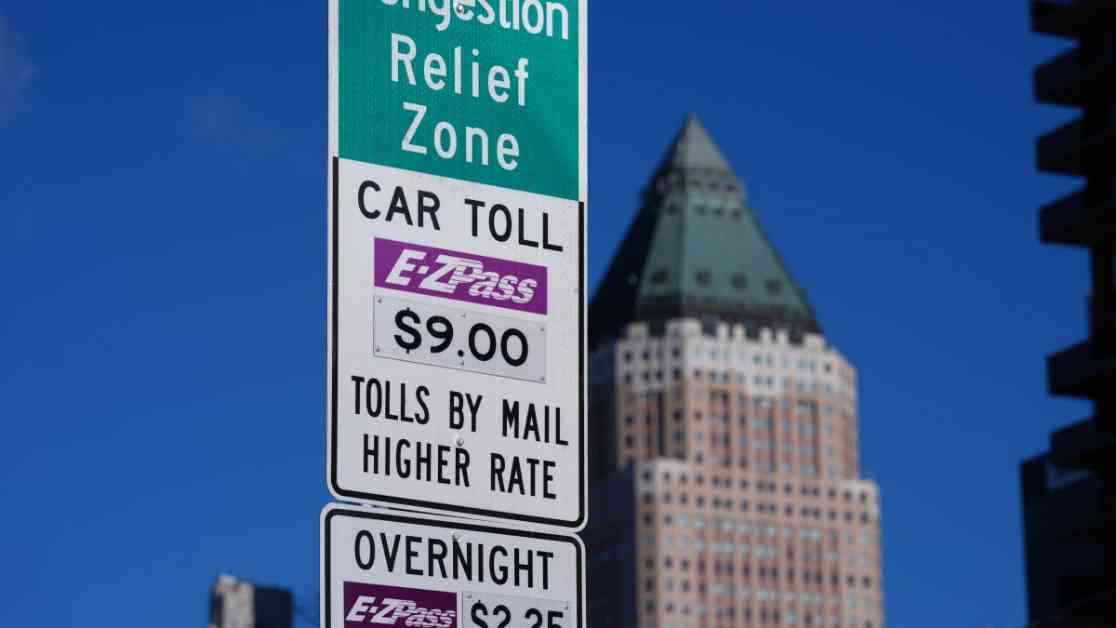Wednesday marked a significant milestone in New York City as it commemorated the one-month anniversary of the launch of congestion pricing. This groundbreaking initiative, spearheaded by the MTA, is the first of its kind in the nation and has already begun reshaping the city’s traffic landscape. Recent revelations have shed light on the early success of the program, as well as the challenges it faces in the days ahead.
The MTA recently unveiled the financial impact of congestion pricing, revealing that the Manhattan toll, which charges drivers $9 during peak hours, generated a substantial $48.7 million in revenue for the month of January. Despite a brief pause initiated by Governor Kathy Hochul, the toll collected millions in just under four weeks, marking a significant step towards the projected $500 million target. A quarter of the initial revenue will be allocated to covering the $11 million installation cost of the tolling gantries and congestion pricing system.
Janno Lieber, Chair of the MTA, emphasized the positive outcomes of congestion pricing, citing enhanced safety, efficiency, and economic strength as key benefits. “All of the indications are congestion pricing made New York safer, faster, and stronger economically. Why would you put an end to it?” Lieber remarked, underlining the critical role of the tolling program in transforming the city’s transportation landscape. However, despite these encouraging results, the future of congestion pricing remains uncertain due to ongoing opposition from suburban officials and other critics who are urging President Donald Trump to terminate the toll program.
As the city navigates this pivotal juncture in its transportation history, a recent poll has revealed a surprising shift in public opinion regarding congestion pricing. Despite initial hesitance and skepticism, the program has garnered the support of a majority of NYC drivers, reflecting a growing acceptance of this innovative approach to traffic management. NBC New York’s Andrew Siff reported on these evolving sentiments among residents and officials alike, underscoring the nuanced narrative surrounding congestion pricing.
The transformative impact of congestion pricing is evident in the latest traffic data released by the MTA, which highlights a notable decline in vehicular activity within the Central Business District of Manhattan. A million fewer vehicles entered this area between January 5 and February 4, 2025, compared to the same period in the previous year, marking a 7.5% reduction in traffic volume. This substantial decrease in congestion underscores the tangible benefits of the tolling program in alleviating gridlock and enhancing the overall flow of traffic in the city.
Further analysis of the first month’s toll receipts reveals interesting patterns in vehicle usage within the Congestion Relief Zone. Passenger vehicles emerged as the dominant category, comprising over two-thirds of all drivers, followed by taxis and for-hire vehicles at approximately 22%, and trucks and buses. The majority of drivers traversing the CRZ did so during peak hours, with only 5% opting for the reduced $2.25 off-peak rate available after 9 p.m. This breakdown of vehicle types and usage patterns offers valuable insights into the diverse impact of congestion pricing on different segments of the city’s population.
In conclusion, the initial successes and challenges of congestion pricing in New York City underscore the complex interplay between policy, public opinion, and urban infrastructure. As the city continues to adapt to this transformative initiative, the coming months will be crucial in determining the long-term viability and sustainability of congestion pricing as a solution to urban congestion. The evolving narrative of congestion pricing in NYC reflects a broader shift towards innovative approaches to urban transportation, signaling the city’s commitment to fostering a more efficient, equitable, and sustainable future for all its residents.


